Getaway to Bogor and Bandung
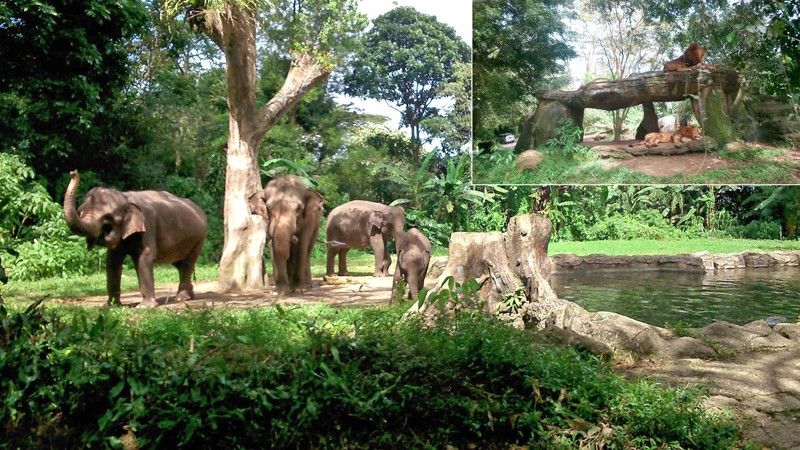
Endearing Indonesia 2
MANILA, Philippines — Bogor and Bandung are two popular getaways from the city due to their cool climate, like our Tagaytay. I usually bring guests to a whole day tour of Puncak in Bogor starting with a leisurely walk at Gunung Mas tea plantation. Tea pickers start out early as they meticulously hand pick then sort out leaves in baskets. Aside from being able to observe and appreciate all the hard work behind a healthful cup of tea, the invigorating breeze while hiking the sprawling hills is refreshing to both the lungs and spirit.
A few kilometers away from Gunung Mas is Taman Bunga Nusantara or Nusantara Flower Garden. A haven for floriculturists and lovers of flowers, the 35-hectare park has theme gardens within, such as the Japanese, Bali and French gardens, which are popular spots for photo enthusiasts. The labyrinth park is for adventurous visitors who love to solve mazes and puzzles. During the Christmas season, the entrance of Taman Bunga is bedecked with flaming red poinsettias, while a new set of blooms decorate the park in summer and spring.
We usually cap our stay in this side of Bogor with a late lunch at a restaurant in Puncak Park Resort. Dining al fresco overlooking giant pine trees is reminiscent of our Baguio of old. Even the cottages, where we once stayed for a weekend trip, are quite reminiscent of the log cabins of Camp John Hay, complete with fireplace. Our children also had the chance to go horseback riding.
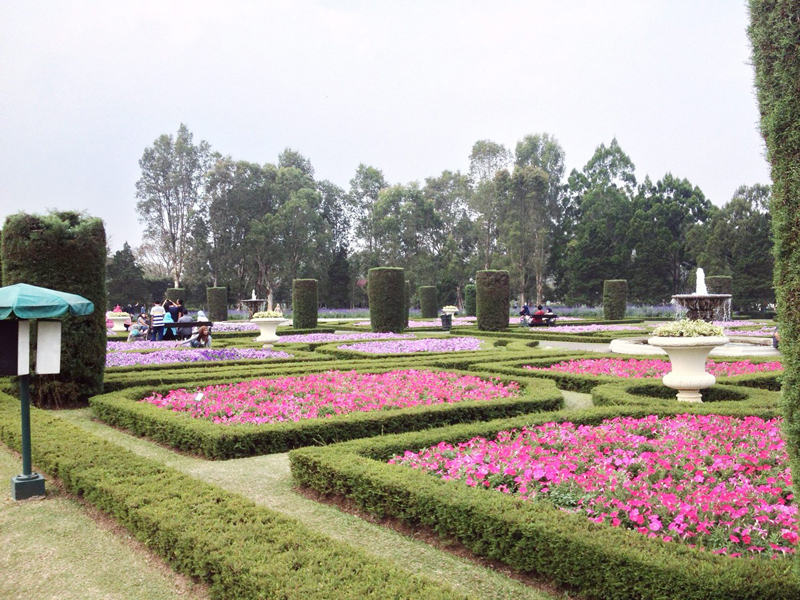
French garden and...
On this side of Bogor is another must-see place, Taman Safari. The world-class zoo and animal theme park is nestled on a cool mountain top of Bogor. The 150-hectare park is home to more than 2,000 animals, most of which roam around the park freely, and visitors are cautioned to strictly follow rules in order not to disturb the animals. As in most theme parks, animal shows are quite popular in Taman Safari.
There’s another side of Bogor where the Kebun Raya or Bogor Botanical Gardens is located. Within the adjoining compound is the Istana Bogor or Bogor Presidential Palace, a la Baguio’s The Mansion. Visiting this equally picturesque side of Bogor entails a separate day. Within the 200-acre park are interesting features such as the man-made Gunting Pond, the bamboo park, a Dutch cemetery, an orchidarium, an herbarium and a vast open field where children freely run around. In one of our visits, we had lunch at the Grand Garden Café where an iconic photograph of former US president Barack Obama, who visited Indonesia in 2017, and Indonesian President Widodo Jokowi hangs on the wall. The two world leaders appear to be having light banter over a simple meal with the expansive view of the park serving as backdrop.
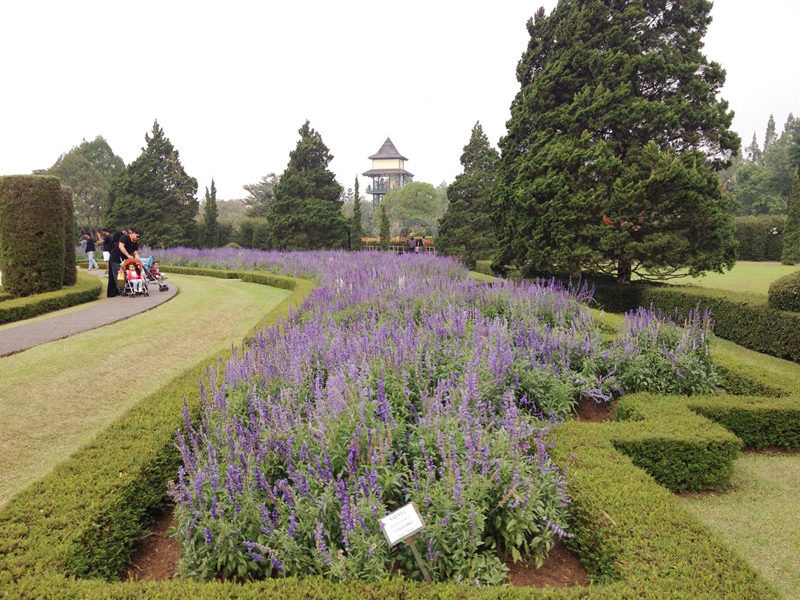
...the garden labyrinth (right) at the 35-hectare Nusantara Flower Garden.
I have noted that Indonesians, especially families, frequent parks and outdoor recreational areas on weekends and holidays. Aside from serving as picnic grounds, these nature and environment friendly places are helpful sites where children and adults alike learn more about the country’s flora and fauna.
Apart from being a hub for artists, a shopping destination and a university town, I bring guests to Bandung for two other reasons: to learn from and explore the historic Museum Konferensi Asia Africa or Museum of the Asian-African Conference and to delight and participate in an angklung performance at the Saung Udjo Angklung or Udjo’s House of Angklung.
Housed in Gedung Merdeka, The Museum of the Asian-African Conference was established to immortalize one of the most significant events that took place in Bandung from April 18 to 24, 1955, only 10 years after Indonesia gained its independence. A diorama of then Indonesian president Soekarno delivering the opening speech with some world leaders in the background welcomes guests to the historic building. In the same site where the momentous event took place more than 60 years ago is a well-curated selection of information related to the gathering of nations. The same chairs used by world leaders in 1955 and the flags of participating nations during the conference still adorn the Freedom Hall where the week-long conference was held. Memorabilia such as the typewriters and telex machines used by reporters documenting the event are also on display.
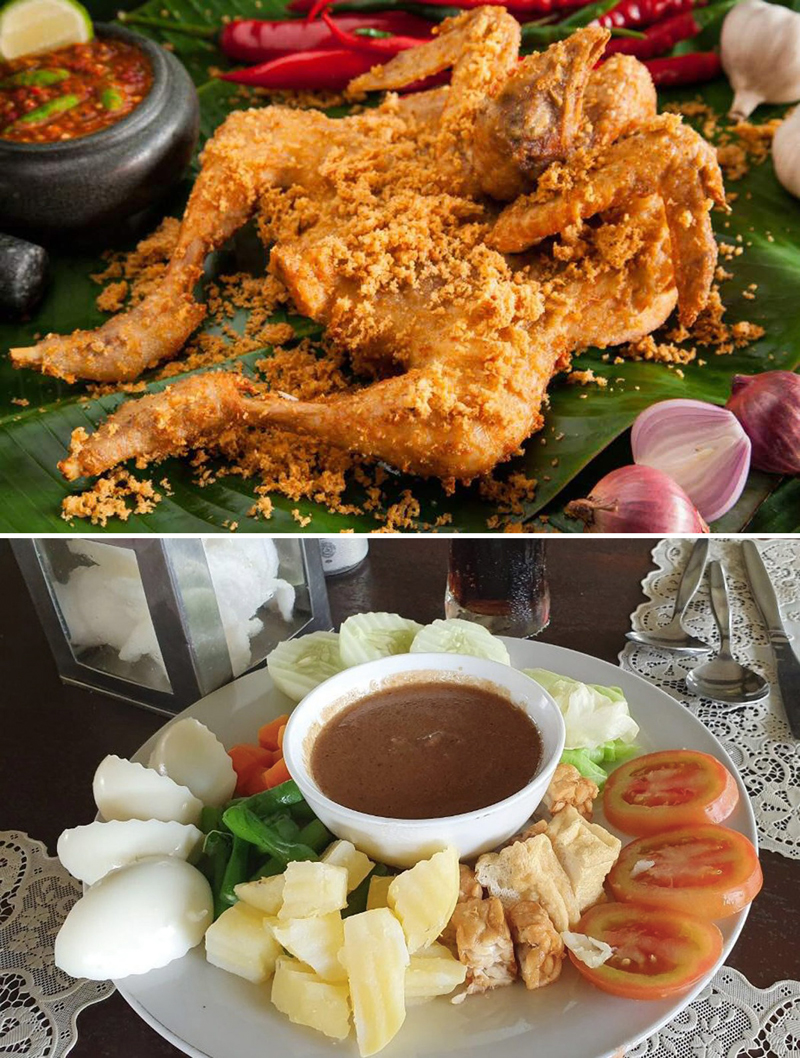
Indonesian culinary delights include ayam kremes (fried chicken with crispy crumbs) and gado gado (boiled or steamed vegetables, egg, tofu with peanut sauce dressing). Since last year, gado gado is promoted as one of five national dishes of Indonesia.
My latest visit to the museum was only two months ago with two friends from Sorsogon. An officer of Indonesia’s Foreign Ministry kindly assisted us and introduced us to a brilliant educator who directed us to a comprehensive tour, replete with both instructive and trivial information about the events that unfolded more than six decades ago. As in my previous visits, I think what remain impressive with the museum are the well-presented documents, declarations, photographs, newspaper articles and audio visual presentations that serve as tangible testaments to one of the most influential milestones not only in Indonesia but in the world. We were deeply touched when our educator brought us to the section which features participating countries and delegates to the conference, the Philippines among them. As we stood there, our national anthem was played. There was utter silence among the three of us and it was only after the tour was over that we poignantly reflected on how significant the spirit of the Bandung Conference – one that centers on the quest for peace and unity – still resonates, especially in these unsettling times, not only in our country but in other parts of the world.
With our patriotic fervor still disturbed, we headed to the Saung Udjo Angklung or House of Angklung. Comfortably seated in the airy amphitheater made of bamboo, we enjoyed the performances of young, talented artists who entertained us with graceful executions of traditional Indonesian dances and songs.
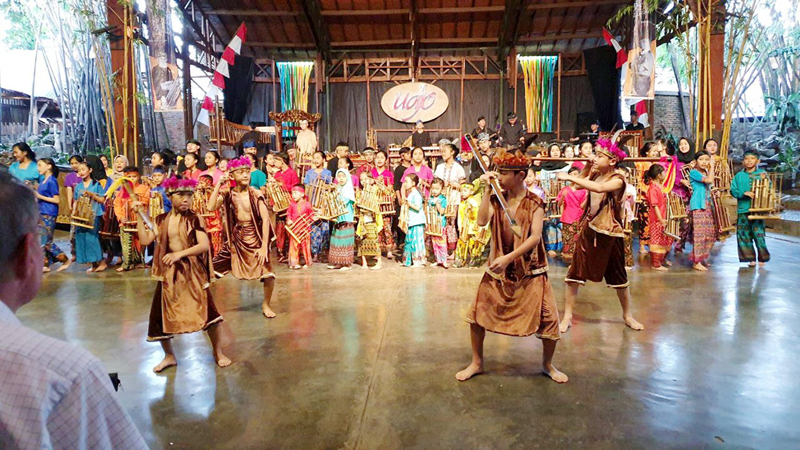
Young performers at the House of Angklung. Photos by Noel Novicio
The highlight of the show is always the angklung ensemble performance. With a repertoire of traditional and contemporary songs, the music prodigies, some as young as seven years old, skillfully and flawlessly play the angklung, with the older ones using not only a set or two of the instrument. Towards the end of the show, guests are treated to angklung 101 tutorials, sometimes with no less than the son of the center’s founder Pak Udjo, who masterfully plays the indigenous musical instrument and patiently teaches the audience how to create lovely music out of the bamboo instrument.
The tutorial segues to an invitation to dance, where the young performers fetch the audience from their seats to take part in the merry making. This, I think, is one of the most memorable ways of capping a tour of Bandung – when guests bring home along a joyful melody in their heart, feel the warmth and kindness of the people and remember the generous souls who have made a difference in their life, even just for a day.



















